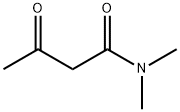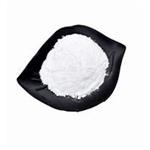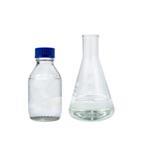Description
N,N-dimethylacetoacetamide is a clear, colorless to yellow liquid used as a general purpose, low color generating co-promoter for many unsaturated polyester (FRP) resin formulations. It is also used in the production of low VOC unsaturated polyester (FRP) systems for coatings and as an intermediate for the production of insecticides.
Application
N,N-Dimethylacetylacetamide is an organic intermediate that can be used to prepare thioamide compounds. As an important thiocarboxylic acid derivative, thioamide compounds have received extensive attention in pharmaceutical synthesis, chemical engineering and related fields. Thioamide and its derivatives have a wide range of applications in analysis, materials, and electrochemistry. They are not only used in the production of polymerization inhibitors, catalysts, stabilizers, pesticides, etc., but also in the production of pharmaceutical raw materials, vulcanizing agents, and chemicals. Coupling reagents, collectors, etc.
Chemical Properties
Clear, colorless to yellow liquid
Uses
N,N-Dimethylacetamide is used as intermediate for the production of insecticides, e.g. dicrotophos and as a promoter in unsaturated polyester resins. Product Data Sheet
Uses
N,N-Dimethyl-3-oxobutanamide is used as a reactant in the asymmetric hydrogenation of functionalized ketones in presence of chiral bis(diphenylphosphino)binaphthyl ruthenium complex.
General Description
The product is an 80% solution of
N,
N-dimethylacetoacetamide (DMAA) in water.
Flammability and Explosibility
Non flammable
Toxicology
N,N-Dimethylacetoacetamide (DMAAm) is a β-dicarbonyl compound that is utilized as a co-promoter in the production of unsaturated polyester resins used in coating materials and as an industrial intermediate in insecticide synthesis. Patents have also been issued for its use in hair colorants. However, DMAAm had limited toxicology and information available. DMAAm appears to have low toxicity in rodents. Smyth et al. reported an oral LD50 in male CarworthWistar rats of 22.6mL/kg (estimated to be approximately 19.8g/kg) and a dermal LD50 in male New Zealand rabbits of 14.1mL/kg (12.4g/kg) (single 8-h exposure). Oral gavage administration of DMAAm did not result in any mortality in rats (strain and gender not reported) at doses up to 3.2g/kg. DMAAm has been identified as a hydrolytic product and a degradation product of the insecticide dicrotophos ((dimethoxyphosphinyloxy)-N, N-dimethylcis-crotonamide) in soil, but was not found as a urinary metabolite of this insecticide in rats[1].
References
[1] Timothy Fennell. “Disposition and metabolism of N,N-dimethylacetoacetamide in male F344 and Wistar-Han rats and female B6C3F1 mice.” Xenobiotica 41 11 (2011): 1013–20.




